Dear Artist,
Yesterday, Tony Max wrote, “I have dozens of galleries handling my work. How do you prevent dealers from giving significant discounts when they sell your consigned work, thus depreciating it in the eyes of your other dealers and your trusting followers?” Thanks, Tony. You might consider asking your discounting dealers to phone you when they’re thinking of giving someone a deal. This request makes dealers aware of your ownership rights and often helps them to make sales. My limit is about 10%, and there are four main reasons I consider giving a discount: The customer is buying more than one of my paintings. The customer is a regular and loyal supporter of the gallery. The customer is a registered charity or non-profit entity. The customer is my mom.
Since the advent of the Internet, savvy customers soon find an artist’s standard prices and scout the best prices across an artist’s stable of dealers. Further, they quickly note dealers who offer work with the prices fudged up. This false pricing or profiteering is defended by some dealers to give them wiggle room for further discounting. It may seem like smart marketing, but the practice tends to make it more difficult for the fudging dealers to do business. Gently encourage your dealers to stick by your standard, published prices.
Many folks who collect art are hardwired for deal-making. Particularly these days, some tough customers feel both artists and dealers are vulnerable and try to get them to really sharpen their pencils. Very often these customers can be satisfied if the dealer throws in the frame or absorbs any sales taxes or shipping charges. To their credit, some dealers never budge. Good dealers manage our mutual business with integrity. Further, quite a few cash deals are floating around these days. Folks, particularly those who receive cash in the underground economy are walking in with bundles and demanding discounts. I feel this is the dealer’s business, and I don’t interfere with it, but I still expect to be paid the proper amount by cheque. Genn’s Law No. 1 says, “When taxes are seen to go high, buyer morality is seen to go low.” Incidentally, Genn’s law No. 2 says, “The more you pay your accountant, the less you pay the government.” It’s really a very pleasant and balanced world when you think about it.
Best regards,
Robert
PS: “I’m quite encouraged at our success and have to thank you for the good management that has produced it.” (Winslow Homer to his dealer, Gustav Reichard)
Esoterica: One of my dealers recently had a customer who low-balled one of my better paintings. I suggested we take the painting off the market, and the dealer reluctantly sent it back to my studio. The customer, with all his bluff, came back to the gallery, found the painting missing from the place it had hung for several weeks, and hastily bought another and paid the full price. Two excellent things a dealer can say to a customer are, “Yes, you can have it,” and “I’m sorry, it’s gone.”
This letter was originally published as “Discounting your art” on February 15, 2011.
Have you considered a Premium Artist Listing? With each letter, an artist is featured at the bottom of this page. The Premium Artist Listings are a means of connecting artist subscribers through their work. Proceeds from each listing contribute to the production of The Painter’s Keys.
“Price is what you pay. Value is what you get.” (Warren Buffett)
Featured Artist
The move to Northern California spurred my desire to paint the landscape – motivated in part by the fear that I would wake up one day and it would all be gone! I had some kind of doomsday concern, tantamount to extreme climate change or bombs going off like Hiroshima —something drastic.
The Wildfires of 2017 were traumatic, we experienced three on our land that year.
In processing the fire experiences and living with the constant awareness that what happened then can happen again. I produced a short film entitled:: From the Ashes – Fire, Survival. and Renewal, about how our community responded to the Redwood Complex Fire 2017.The is film available for free screenings to community fire councils and art institutions. I am working on part two.
In 2020, largely due to the ensuing California wildfires, we chose to sell our 195 acre place and move back to the East Coast, where our families live and we are creating a new life and farm.
I am still witnessing and interpreting the landscape.
Jaye Alison Moscariello

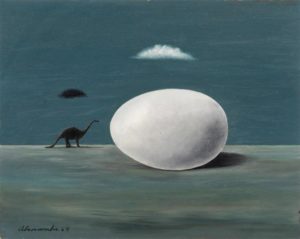
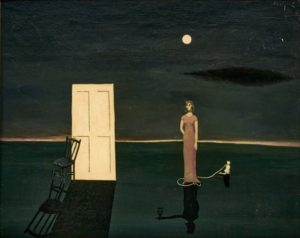
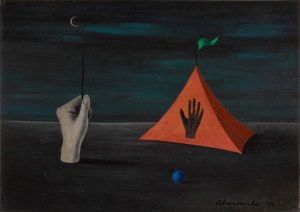


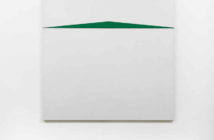
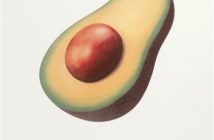

6 Comments
Thank you for this wonderful article!
And those works by Gertrude Abercrombie are breathtaking! Have a great week!
This has always been an issue at my gallery. We have a general policy to give no discounts, never for things. under $400 and we also might call the artist. We also ask that they include any allowed discounts on their inventory. A few times I’ve offered a 5% off of multiple sales by the same artist, to be taken off the gallery commission, with the understanding it’s only good for that day. I make sure they know it’s a gallery offer, and will not come out of the artists payment, And, there are a few customers who are fanatic about discounts, I even had one lie to me that they had talked to the artist who had approved a high discount. We price the work at very reasonable prices and really prefer to work with the collectors who understand the work and expenses that go into into making and selling art.
We have a now standard mark up here in galleries of 50%. I think it has shot gallery owners in the foot as all artists prices have to be doubled….including framing. It is killing business.
Robert was a wise man and particularly about discounts and standard prices (and I also would add – visible prices) across the internet. My work has always sold well and at the higher end of the emerging market. It is reviewed each year for an increase against the sales and market conditions. I will add that deal seeking situation is much easier now that I am slightly more established and have that all-coveted “brand recognition” that is known for standard pricing and the use of the highest quality material I can afforded plus prompt and friendly service. Fewer people now come to me looking for a bargain or to make a deal. At first, it was hard though and I didn’t have much experience negotiating. After a while I saw a pattern. Some people just love to deal and never pay full price for much of anything. They just want something. These are the ones where I could offer shipping or delivery or a book about my work and not devalue the purchase price of the art. Other art collectors will always pay the sticker price because they are kind and fair and know the work that goes into each painting. These are my most coveted collectors. I wanted more of these art collectors. So I thought – how can a reward kind acceptance of the value of my work and honour the need for the dealer to get a deal? This is when I came up with a similar system of criteria that Robert mentions. After you purchases your first painting from me (or now my gallery) you can have a 10% collector appreciation saving on future work purchased. So if you purchase two paintings you can have 10% collector savings on the second painting. This system has been working well for me for over 10 years. The second part of this equation is to price the work appropriately in the first place. Half of the price for my work is for painting it and the other half is for marketing and selling it, either directly or through another venue or gallery. If I am selling the work directly as an artist I am putting in the same marketing effort to find an art collector as a gallery and I need to be paid for my time and expenses. These marketing and selling efforts cannot come out of my efforts to paint the work. They are separate things. If artists do this, plus price their work for the markets they want to reach, then it is easier and feels legitimate to keep the prices standard no matter the location or venue. If artists do this and combine it with an annual price review to determine if there is room to increase prices, they should do reasonably well….. particularly if their main focus is on producing the best possible painting or art that they can possibly do, better than last year and better than the last piece, always learning, practicing, growing and being in awe of what might be possible.
I am a gallery owner and I do not discount art My standard answer is ‘ I ask my artists to give me their best price. One that is good for the artist and the collector.’ The buyer now knows they are getting the best price and will not be discounted for the next person. It also creates a ‘value’ to the purchase, knowing the artists work will not be devalued.
I think if you have a gallery who represents your work and is at all dishonest, pull out of there. I know how lucky I am to have a long running same owner dealer who’s entire staff is supportive and honest at all times. I once suggested to the manager in the past that if making a sale meant taking “a bit off” the price, that was okay with me. She said they really don’t like doing that, nor do they feel it necessary. The listed prices on the artwork are fair and their collectors are happy to pay it if they want that particular artists work. I do love Robert’s 4 Rules, tho, especially ” if the buyer is his mom”… love it! :)